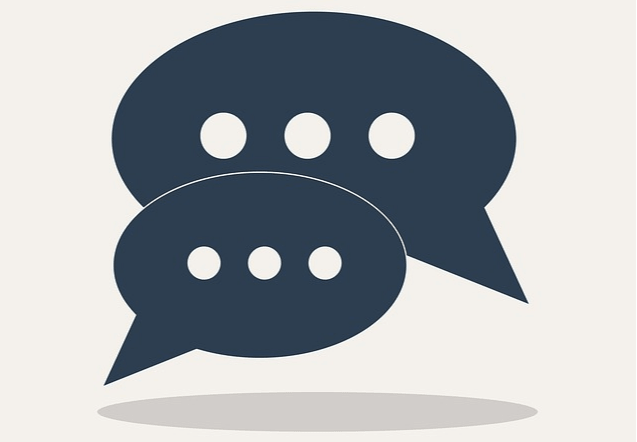The job of a biller working in behavioral health or addiction treatment is one of the most complex in all of healthcare.
Behavioral health or addiction treatment facilities often provide inpatient and outpatient services. Both types of services have their own distinct rules and guidelines.
As a result, behavioral health billers are tasked with becoming experts in inpatient and outpatient financial processes.
They must navigate two sets of claim types, codes and policy guidelines to promote and preserve the billing health of their facility.
Behavioral health billers need an EHR that can accommodate the incorporation of both inpatient and outpatient requirements.
Billing health is so important to a facility’s operational and treatment success. The financial tools available to a finance department can often dictates that billing health.
This article highlights three EHR finance features that empower behavioral health billers to do their job accurately and efficiently.
- Strong Revenue Tracking Capabilities
- Clean Claim Facilitation
- Communication Capabilities
1) Strong Revenue Tracking Capabilities
In behavioral health and addiction treatment, the clinical and billing sides are deeply integrated. An enterprise EHR is valuable in this field because of the need to navigate between clinical and financial features.
Put simply, an enterprise system is able to house all of a facility’s EHR features in one single platform. In an enterprise EHR, every aspect of an organization’s treatment and services are integrated.
These platforms not only assist providers in delivering comprehensive treatment to its patients, but also give users the tools to coordinate their processes with the entire operation.
In the case of a biller’s role, an enterprise system provides flexibility in how they can run reports to track financial data. EHRs with an adequate financial suite allow users to monitor the general financial health of their facility.
Stronger revenue tracking features take it a step further. They empower users to report on and track specific areas, such as a single service or level of care.
For example, it can be helpful for a facility to view the billing performance of its inpatient services vs. outpatient services.
Maybe an organization’s percentage of positive claims was lacking in the last few months. If an EHR only provides general tracking capabilities, users may not be able to uncover the cause of the dip in performance.
Consider the benefit of viewing the reimbursement rate of inpatient services and outpatient services separately. Users may find that inpatient is performing normally while outpatient is exhibiting an unusually low reimbursement rate.
Now the facility has a much more precise and detailed picture of their billing health.
With such targeted financial snapshots, users can identify areas of excellence and areas that need improvement. A provider can then allocate billing or clinical resources to those outpatient services to improve the reimbursement percentage.
Imagine the alternative, where a facility uses an accounts receivable software for their finances and a clinical EHR for their clinical treatment.
These are two software systems that rarely, if ever, “talk to each other” in an intelligent way.
Users cannot gain the same clinical context when reviewing every expense (both clinical and non-clinical) in a general ledger.

Enterprise EHRs also link the financial and clinical sides in a way that is conducive to financial audits, which are a big part of any biller’s world.
Audits are less painful when a facility’s financial records and clinical records are linked in the same platform. Billers do not have to scramble between two separate systems.
Instead, the information is available and trackable in the same place. This eliminates staff stress that can be associated with audits and promotes the accuracy of the records being audited.
2) Clean Claim Facilitation
The main goal of a biller is to create the perfect claim, every time, for every payer.
This is also the biggest challenge billers face.
The quality of a biller’s finance tools often dictates a their success in overcoming this challenge (or achieving this goal).
A billing staff has to have a handle on many factors in the healthcare billing environment, such as:
- State insurance requirements (which can differ greatly from state to state)
- Private insurance requirements (which can differ greatly from payer to payer)
- Clearinghouse compatibility
- Payer takebacks
To accommodate the varied and nuanced payer requirements, an EHR should offer what is commonly referred to as a chargemaster.
Generally, a chargemaster is a master list of all services, including billable rates and service codes, that are used by the practice.
Effective EHRs provide more information in their chargemasters to aid billers, though.
Not every insurance payer will reimburse at the same fee schedule. Plus, some payers have different billing requirements that must be met for proper reimbursement.
The EHR should allow for payer level specification based on the payer’s contract with the provider.
Knowing that a specific payer has a certain requirement based on the level of care, or a different rate, or a different modifier, can be critical in creating correct claims efficiently.
High-quality chargemasters can further define each service on a patient level, too.
Two patients with the same insurance may have differences in their policies. Breaking down requirements per payer is sometimes not enough to ensure a clean claim.
A strong EHR can facilitate one patient’s specific policy conditions in a way that does not affect other patients with the same insurance that do not come with those conditions.
Such comprehensive chargemasters take a good deal of configuration on the front end. However, that preparation makes a world of difference in achieving clean claims at a high rate.
Then, when it comes time to generate and submit claims, there is no guesswork regarding payer requirements.
.jpg)
3) Communication Capabilities
The workday can be very hectic for a billing staff, especially at larger facilities.
Effective EHRs give billers the ability to communicate with any other department at their organization.
Immediate communication with staff can be achieved through features like:
- Instant messaging
- Direct emails
- Contact logs
For example, a biller may come across a billable service that has not been charged because it lacks the proper authorization.
Through instant messaging, the biller can contact the corresponding clinician and request them to sign off on the service. Then, the claim can be finalized promptly and sent out for reimbursement.
Without easy communication between departments, the biller may have to physically seek out that clinician. In some cases, they may even have to wait for the clinician’s next shift, which can slow down the process considerably.
An EHR should also facilitate internal communication between the billing staff itself.
Ideally, an EHR will give power users or billing managers access to snapshots for a holistic view of the their finances.
From there, a billing manager can follow claims through their claim cycle and delegate billing tasks as needed.
The ability for a billing manager to instantaneously assign claims to specific team members for prompt reconciliation greatly contributes to claim cycle efficiency.

Behavioral Health Billing: Further Education
Medical billing can be rather complicated, especially in behavioral health and addiction treatment. We hope you have a better idea of the kinds of financial EHR features that make life easier on billers in this field.
If you were impressed by the features discussed in this article, you may be interested in the financial suite that Sigmund offers.
Drawing from 20 years of customer collaboration, and the insights of knowledgeable healthcare billers on staff, AURA is tailor-made for billing success in behavioral health and addiction treatment.
Curious about the rest of the billing tools Sigmund has to offer? Feel free to reach out and speak to one of our knowledgable professionals today! We’d love to walk you through it.
And If you would like to see how AURA’s financial features look and feel in real-time, schedule a demo here!


